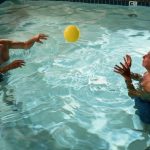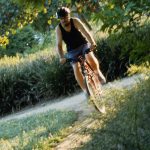
You know the value of exercise for maintaining good health and managing chronic conditions like arthritis, but you also know how hard it is to fit daily workouts into a busy schedule to meet weekly minimums. As an alternative, many people try to cram in a week’s worth of fitness on the weekends. While this approach has been met with skepticism in the past (along with worry about injuries), new research shows that you can get exercise’s health benefits this way. A British study published in JAMA Internal Medicine says there’s no reason to abandon exercise completely if you can’t do it during the work week. Packing exercise into your weekend is actually a viable option. Based on surveys from 63,000 people, any exercise is better than none. Researchers found that people who exercise at a high rate on weekends — getting in the recommended 150 minutes of moderate exercise or 75 minutes of vigorous activity — had about 30% lower risk of early death than people who don’t exercise at all. Another interesting finding: People who exercise more often but for shorter blocks of time can also lower their risk for chronic conditions — yes, even if they fail to total 150 minutes a week. The bottom line? Get up and move whenever you can. Note: If you aren’t in shape, get your doctor’s… read on >




























-300x200.jpg)







-300x169.jpg)
